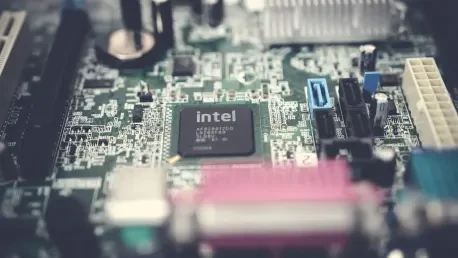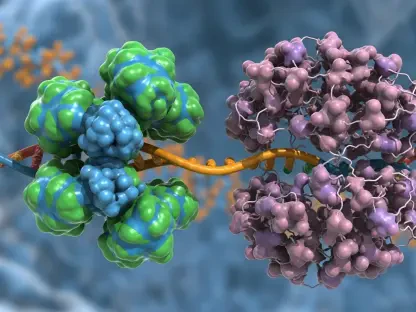In an era where artificial intelligence is rapidly transforming the technological landscape, the demand for processors capable of handling complex AI workloads has never been higher, prompting major chipmakers to innovate at an unprecedented pace. Intel, a key player in this competitive field, is gearing up to introduce its Nova Lake CPU family, which promises to push the boundaries of AI performance with the integration of a cutting-edge 6th generation Neural Processing Unit, known as NPU6. This development, recently uncovered through a Linux Kernel patch, signals a significant step forward in enhancing AI-driven tasks on personal and enterprise computing devices. As AI applications become more pervasive, from virtual assistants to advanced data analytics, the need for robust hardware support grows. Intel’s latest move not only addresses this need but also positions the company to meet future demands in a market that is still grappling with the adoption of AI-focused systems. This advancement underscores a strategic focus on staying ahead in a rapidly evolving industry.
Pushing AI Boundaries with NPU6
The revelation of NPU6 in the Nova Lake CPU lineup highlights Intel’s unwavering commitment to advancing AI capabilities with each new processor family. Unlike some competitors who may reuse existing technologies across generations, Intel has adopted a strategy of consistent upgrades, ensuring that newer chips bring enhanced processing power for AI tasks. For instance, while Panther Lake, set for release soon, will incorporate NPU5 with a performance capacity of up to 50 AI TOPS (Tera Operations Per Second), Nova Lake is slated to surpass this with the more advanced NPU6 next year. Although specific performance metrics for NPU6 remain under wraps, the transition suggests a notable leap in efficiency and speed for AI computations. This progression is further evidenced by a Linux Kernel patch that confirms support for NPU6 through a new PCI Device ID and related firmware, building on the existing framework of NPU5. Such incremental yet impactful updates reflect Intel’s dedication to refining AI hardware, even as the broader market shows mixed enthusiasm for AI PCs at present.
Strategic Vision for Future AI Demands
Looking ahead, Intel’s integration of NPU6 into Nova Lake CPUs demonstrates a forward-thinking approach aimed at meeting emerging standards and certifications, such as Copilot+ readiness, which demands high AI TOPS for compliance. This focus on future-proofing aligns with the company’s broader market strategy, balancing current dynamics with long-term technological trends. Even as demand for older architectures like Raptor Lake remains strong, leading to reported price adjustments, Intel continues to prioritize innovation in AI processing. The consistent rollout of newer NPU generations—evident from earlier transitions like NPU3 in Meteor Lake to NPU4 in Lunar Lake—illustrates a pattern of proactive development. This approach not only prepares Intel for the anticipated surge in AI application needs but also strengthens its competitive stance in a landscape where AI adoption is still gaining traction. Reflecting on this journey, the steps taken to embed advanced NPUs in successive CPU families mark a deliberate effort to pave the way for transformative computing experiences. As the industry evolves, attention should turn to how these advancements can be leveraged to accelerate AI integration across diverse sectors.









